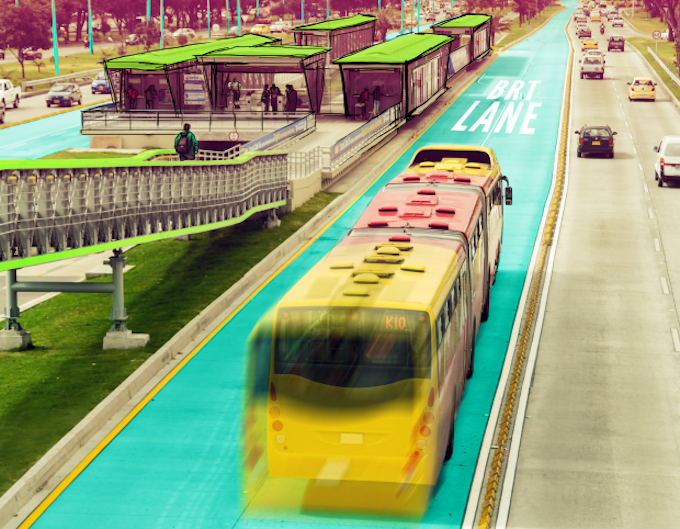
As the Commonwealth of Massachusetts and City of Boston examine methods to improve public transportation in the Greater Metro Area, a new study suggests that perhaps the best way to alleviate the region’s transit woes is through Bus Rapid Transit (BRT).
According to the study – which was produced after The Barr Foundation and Institute for Transportation & Development Policy convened a group of transportation pundits in Mexico City to learn the benefits and potential drawbacks of BRT – BRT is a system comprised of “enclosed stations, exclusive lanes physically separated from traffic, pre-paid fare collection, smart use of real-time data, and beautiful design.”
Imagine not falling victim to the passenger congestion that ensues while people try and load their CharlieCards in the morning and simply walking through a gate to a platform where a bus picks you up like a subway train would. It’s not unlike how the Silver Line currently operates in Boston (only when it operates while underground) but this builds on the beneficial aspects of that.
That group of stakeholders included individuals from MassDOT, Urban League of Massachusetts, Alternatives for Community and Environment, Fort Hill Infrastructure Services, A Better City, and Stull and Lee, Inc., to name just a few.
By taking into account the kind benefits yielded by BRT in Mexico City and ridership data courtesy of the MBTA, the study identified 12 corridors where BRT could be implemented of which five ought to be prioritized. Not only would passengers shave times off their respective commutes, but BRT also provides for linkages to close proximity bikeshares and, inherently, access to newly emerged startups like Bridj – a bus company that uses big data to determine fast, non-traditional bus routes for passengers.

Based on that data, the study contends that BRT would save passengers 24 minutes from Dudley Square to Harvard Square, 10 minutes from Dudley to Downtown, 10 minutes from Dudley to Mattapan, 6 minutes from Readville (Hyde Park) to Forest Hills, and 4 or 6 minutes from Sullivan Square to Longwood depending on whether it opts for the Mass. Ave. bridge or BU Bridge.
“These routes would best meet four criteria—reduce congestion on the T, serve underserved communities or groups, provide more direct connections, and serve planned future development,” the study reads. “This narrowed the list of possible corridors to five. In most cases, corridors were either merged or adjusted slightly to come up with most beneficial options.”
BRT could also do well for Boston’s rental scene. Mayor Marty Walsh and the Boston Redevelopment Authority are endeavoring to construction transit-oriented growth zones for workforce housing as part of a comprehensive plan to develop 50,000 new units of housing.
A burgeoning BRT system would afford new areas to develop outside of the currently dense spaces along the MBTA’s subway and bus routes.
Of course, it’s not as if it the city and state can snap their fingers and conjure applicable street infrastructure and accessibility. Boston in particular, as many can attest, is riddled with narrow roads and various one-way streets and in order to accommodate BRT buses new lanes and widened streets would have to be built – one of the foundations of BRT is that lanes are dedicated solely to the buses which accounts for its reliability and efficiency.
But in doing so substantial sums of money could be saved in lieu of extending the MBTA’s subway lines.
“Based on recent BRT and light rail corridor development costs in the United States, BRT can on average be up to seven times more affordable than light rail, per mile,” the study adds. “That could equate to 25 miles of BRT corridor for the same approximate cost of less than four miles of light rail.”
It’ll be interesting to see how both the city and state go about implementing what’s been suggested in this study but the fact that officials were involved in drafting it is promising. Stakeholders are hoping to catalyze more conversation around BRT and engage the public through a series of to-be-determined public hearings.
Given that transformation reform is desperately needed and strides are being made to bolster the use of alternative modes, BRT could be just what Greater Boston needs to carry residents from one place to another especially during detrimental times like the historic winter that brought Boston area transportation to a near-halt in more than 112-inches of snow.

